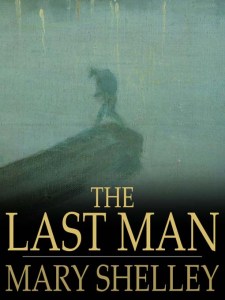I just recently saw this great French comedy adventure film set in the Edwardian era, The Extraordinary Adventures of Adele Blanc-Sec. It’s on Netflix and certainly has Steampunk elements. Here’s the trailer:
Just as we in the 21st century are mad about zombies, those in the 19th century were mad about mummies. Some people, like me, are still mad about mummies.
Here’s a trailer for another modern day mummy movie set in the Edwardian era that I’m sure you’re familiar with. The Mummy. Here’s the favorite scene in that movie for most writers, readers, and librarians.
Reviving mummies began with Jane Webb Loudon who wrote “The Mummy, A Tale of the 22nd Century” in 1827.This was the first mummy story, one of the first sci-fi books and the first sci-fi work with a modern world building style.
“The ancient Egyptians you know, believed that the souls of their mummies were chained to them in a torpid state till the final day of judgment, and supposing this hypotheses to be correct, there is every reason to imagine that by employing so powerful an agent as galvanism, re-animation may be produced.” – From The Mummy, A Tale of the 22nd Century.
And so it is, two of Loudon’s characters, Edwin and Dr. Entwerfen, embark by balloon on an expedition to the tomb of Pharaoh Cheops (Khufu), to shock him back to life with a galvanized battery.
Mummies proved a popular theme in many Regency, Victorian and Edwardian books. With so many mummy books, I’m going to only name the stories or poems about mummies or pharaohs written by author’s you’ll recognize. You may be surprised.
The first is Lord Byron. His poem growing old references the famous Pharaoh, Khufu (Cheops) who built the pyramid at Giza.
“What are the hopes of man? Old Egypt’s King
Cheops erected the first Pyramid
And largest, thinking it was just the thing
To keep his memory whole, and mummy hid;
But somebody or other rummaging,
Burglariously broke his coffin’s lid:
Let not a monument give you or me hopes,
Since not a pinch of dust remains of Cheops.”
Next is another famous poet, Percy Bysshe Shelley, Mary Shelley’s husband. He was inspired by the ancient Greek writer, Diodorus Siculus, who on his travels to Thebes described a giant fallen statue of Ozymandias (Ramesses II). It was inscribed, “I am Ozymandias, King of Kings. Should any man seek to know how great I am and where I lie, let him surpass one of my works.” So Percy Bysshe Shelley wrote the sonnet Ozymandias.
“My name is Ozymandias, King of Kings
Look on my Works, ye Mighty, and despair!
Nothing beside remains. Round the decay
Of that colossal Wreck, boundless and bare
The lone and level sands stretch far away.”
Then we have Edgar Allen Poe’s short story, “Some Words with a Mummy”, written in 1845. It’s humorous satire, a delightful read, and the author’s voice is so fresh it seems as if it could have been written today. Simply put – it’s so Poe.
Next, Louisa May Alcott, of Little Women fame, wrote a short story, “Lost in a Pyramid: The Mummy’s Curse” in 1869 . It’s on the horror side, quite Victorian, and you’ll recognize Alcott’s writing style.
The last one and one of the best is Bram Stoker, author of Dracula. The Jewel of Seven Stars is a full length novel written in 1903 about a female mummy an Egyptologist brings back to his home to revive. His daughter is then possesed by the mummy’s soul. Stoker is a master of suspense and elegant writing. He has wonderful page turning hooks at the end of each chapter. It’s not as great as Dracula – but it’s good and it’s pure Stoker. I loved it.
The Jewel of Seven Stars has two endings. On the third print run, in 1912, the publisher demanded Stoker change the ending. At the time, critics called the original ending too gruesome. I read this at Project Gutenberg, which had the newer ending, but I was able to read the original ending at http://www.goodreads.com/book/show/543300.The_Jewel_of_Seven_Stars The first ending isn’t gruesome by today’s standards though it is horribly sad. Still, the original ending is clearly the best.
What are your favorite Mummy books or movies? Have you read any Steampunk Mummy books? Which do you prefer zombies or mummies? Feel free to comment below.
~ ~ ~
Maeve Alpin, who also writes as Cornelia Amiri, is the author of 19 books. She creates stories with kilts, corsets, fantasy and happy endings. Her latest Steampunk/Romance is Conquistadors In Outer Space, which is as crazy and as entertaining as it sounds. She lives in Houston Texas with her son, granddaughter, and her cat, Severus. Maeve Alpin will be making several appearances next month in May at the Romantic Times Book Lovers Convention in New Orleans and at Comicpalooza in Houston.













